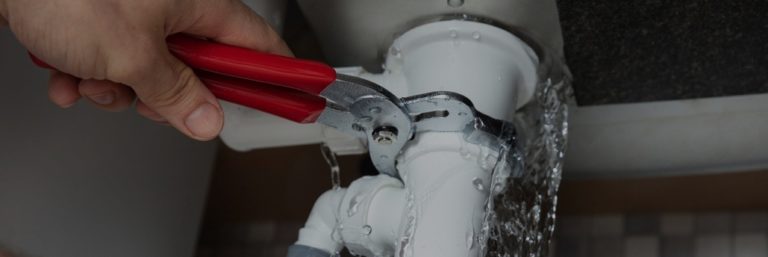Locating Hidden Water Line Leaks: 6 Ingenious Methods
Locating Hidden Water Line Leaks: 6 Ingenious Methods
Blog Article
How do you feel when it comes to Locating water leaks?

Early detection of leaking water lines can reduce a potential catastrophe. Aside from saving you cash, it will minimize the worry and also irritation. The moment you discover a leak, calling your plumber for repair work is the best service. Some little water leaks may not be noticeable. Below are some hacks that help if you can not spot it with your nude eyes.
1. Analyze the Water Meter
Every residence has a water meter. Checking it is a surefire manner in which aids you discover leaks. For beginners, switch off all the water resources. Ensure nobody will certainly purge, use the faucet, shower, run the washing maker or dishwashing machine. From there, most likely to the meter and also watch if it will certainly transform. Given that no one is using it, there ought to be no motions. That suggests a fast-moving leakage if it relocates. Furthermore, if you detect no changes, wait an hour or two and inspect back once more. This suggests you might have a slow-moving leakage that can also be below ground.
2. Inspect Water Usage
Evaluate your water costs as well as track your water intake. As the one paying it, you need to see if there are any kind of disparities. If you identify sudden changes, in spite of your consumption coinciding, it indicates that you have leaks in your plumbing system. Keep in mind, your water bill should fall under the same array every month. An abrupt spike in your costs shows a fast-moving leak.
A steady rise every month, also with the exact same habits, reveals you have a slow leakage that's also gradually escalating. Call a plumber to extensively inspect your residential property, especially if you really feel a warm location on your flooring with piping beneath.
3. Do a Food Coloring Examination
When it comes to water consumption, 30% comes from bathrooms. If the shade somehow infiltrates your dish during that time without flushing, there's a leakage in between the tank as well as dish.
4. Asses Outside Lines
Do not neglect to examine your exterior water lines also. Needs to water permeate out of the link, you have a loosened rubber gasket. One small leak can throw away tons of water and spike your water costs.
5. Evaluate and also Assess the Scenario
Homeowners ought to make it a behavior to check under the sink counters and even inside closets for any type of bad odor or mold and mildew development. These two warnings show a leakage so timely attention is called for. Doing routine inspections, also bi-annually, can conserve you from a major problem.
Check for stainings as well as compromising as most devices and pipelines have a life expectancy. If you believe leaking water lines in your plumbing system, do not wait for it to intensify.
Early detection of dripping water lines can alleviate a possible catastrophe. Some little water leaks may not be noticeable. Checking it is a proven method that aids you find leaks. One little leakage can squander lots of water as well as increase your water expense.
If you suspect dripping water lines in your plumbing system, do not wait for it to escalate.
How to Know If Your Home Has a Hidden Leak
Water Meter Reveals Inexplicable Water Usage
If you’d like to test whether or not there’s a leak somewhere in your home, you can do this using your water meter. Here is how to conduct the test:
Don’t use any water in your home for at least 30 minutes; this also means not turning on faucets or water-using appliances.
Go outside, and check your water meter for activity.
If your water meter shows that there was activity, even though no one was using any water, this proves that there is a leak in your home.Visible Mold or Mildew Growth
Leaks behind walls create moist, dark environments that allow mold and mildew to grow and thrive. Eventually, you might see mold growth forming on the wall closest to a hidden leak.
If mold is growing in an area that receives a high amount of moisture, such as a bathroom, it may simply be an indication that better ventilation is needed. However, if you see mold growth on a wall or the ceiling in an area where you would not expect, you probably have a hidden leak.
Musty, Mildew Odor
Sometimes you might not be able to see the mold or mildew that is growing as a result of a leak. However, the smell can give the problem away just as easily. If you catch a whiff of something musty, there’s a good chance that old water is collecting somewhere in your home that you can’t see.
Stained/Warped Walls, Ceilings, or Floors
When your home soaks up water, a variety of red flags can become visible, including ceiling stains, bubbling drywall, warped walls, and sagging floors. While these issues can be caused by excess humidity, they can also be signs that a pipe or plumbing connection has started leaking behind your walls.
Inexplicably High Water Bill
After a while, you get a general sense for what your water bill should be. If you own a pool or sprinkler system, your bill will tend to be higher during summer. However, if you receive a water bill that seems especially high, and you can’t figure out what caused it, then you may have a hidden leak somewhere that’s increasing your bill.
https://www.plumbingjoint.com/blog/2019/july/how-to-know-if-your-home-has-a-hidden-leak/

I have been very drawn to Top leak detection hacks and I hope you liked the new piece. Appreciated our entry? Please share it. Let others find it. I take joy in reading our article about Finding hidden leaks.
Ready when you are! Report this page